
Go World Travel is reader-supported and may earn a commission from purchases made through links in this piece.
“The British never seem to do anything until they’ve had a cup of tea, by which time it’s too late!”
So said Lauren Bacall’s character in the 1959 film ‘North West Frontier’. And there is a certain amount of truth in that. It’s not that we Brits can’t function without tea (although having said that, I know one or two that actually can’t…), but it does seem to fuel us like petrol does a car.
I bet anyone reading this who isn’t English thinks that having some tea is just, well, having some tea. I’m a bit thirsty, I’ll flick the kettle on, lovely. Elementary mistake.
Tea is the basis of a whole culture, it was what the British Empire was built on, it’s what keeps us going through those long dark winter months. I exaggerate a touch (apart from the third point), but you see what I mean.
Please allow me to try to explain…
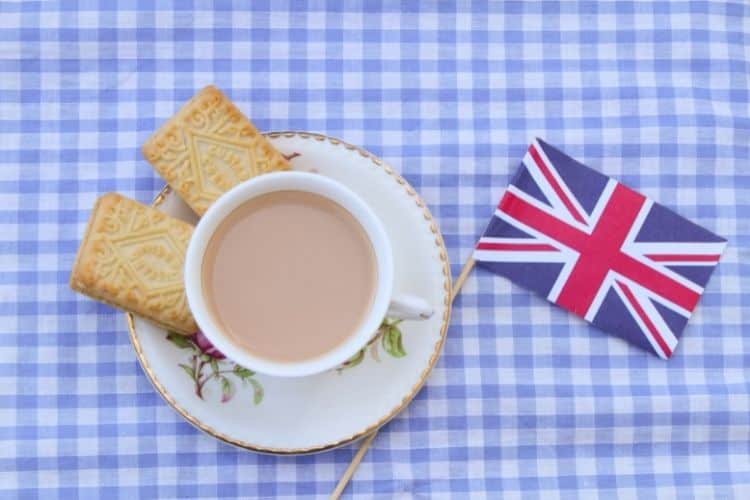
A Bit of Tea History & Etiquette
Tea first arrived in Britain in the 1650s. But, at the time, it wasn’t billed as the drink that will change the life of every English person forevermore. In fact, it was served as a novelty in the popular coffee houses of London.
However, it wasn’t long before tea became a national phenomenon, and by royal appointment. In 1662, King Charles II married Catherine, the daughter of King John VI of Portugal. The first thing that Catherine did upon arrival in England was to ask for a cup of tea as it was already by this time a popular drink amongst the Portuguese. Catherine popularised the drink with the nobility and the English obsession with tea began.
Now, nearly 400 years later, tea can be found everywhere in Britain. The first thing that anyone will do if you turn up at their house is to offer you a cup of tea. But, whatever you do, don’t assume tea is just tea.
If a person is used to one particular brand and is given a different brand, they will instantly know. They will politely drink it if it had been given to them by a relative stranger. But, will then spend the next week telling everyone they meet how it was either too weak or too strong or tasteless. Furthermore, that it is inconceivable that anyone would even consider drinking such an evil brew.
On the other hand, they will not politely drink it if it had been given to them by someone they know well. They will have their first sip, theatrically pull a face that infers they have been poisoned and only had ten minutes to live, look disgustedly into the cup and demand “what is that?”
A heated dispute will then arise about whether the tea in question is either the elixir of the gods or not fit to give to your dog.
And it doesn’t stop there. If a person goes out for tea, rarely do they mean a drink from a cup. The title ‘tea’ is also given to various specialty meals. Not just one specialty meal, oh no, various specialty meals. And don’t even think about confusing them…
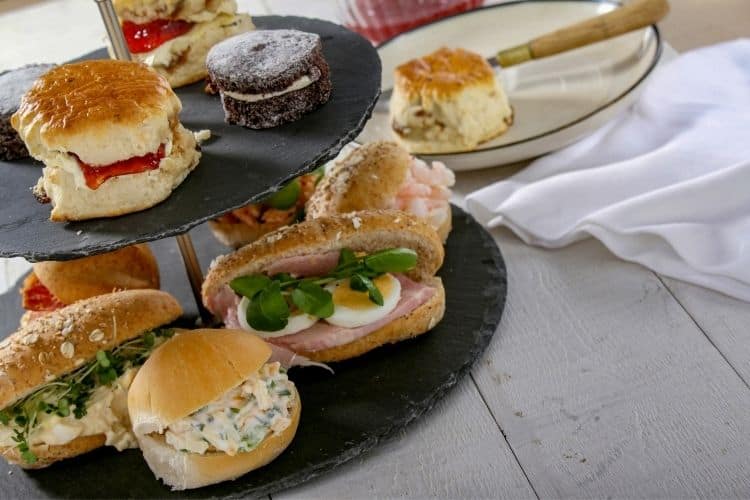
What is Afternoon Tea?
The custom of afternoon tea can be traced back to the 1840s. More specifically, to Anna Russell, the seventh Duchess of Bedford. She would find herself – as, presumably, did many others at the time – constantly becoming hungry around mid-afternoon whilst waiting for dinner time.
Why should this be? What would she do about it? Well, to appreciate her dilemma more fully, we need to understand the practices of the time.
During the Middle Ages, dinner was the main meal of the day and was taken around mid-day after a hard morning’s work. This was, remember, before the days of electric lighting. Families would gather in the natural light to enjoy their meals. Not only did this provide nourishment but it would energise them for the resumption of work for the afternoon.
Later in the day, to sate the appetite of the returning hungry workers, a light snack called supper would be had during the evening before bed.
As the years went by, the main mealtime was pushed back further and further. By the 17th century, it wouldn’t be taken until evening time. To fill the quite substantial gap between breakfast and dinner, a snack called luncheon was introduced.
However, it was only introduced for the ladies whilst the menfolk were out working. Why would we waste time feeding them properly and lose an hour’s work? Luncheon would generally consist of the previous evening’s leftovers.
So, as dinner time became later and later, supper was no longer needed and phased out. So now the meals were breakfast in the morning, lunch at mid-day – ladies only – and dinner in the evening, generally between about 7:00 and 8:00.
This is where the Duchess of Bedford comes in. To satisfy her mid-afternoon craving, she would ask her staff to bring her some sandwiches and tea which would quell her hunger and keep her going until dinner time. She would often invite friends over to share it with her. Afternoon tea at her Woburn Abbey home became a social event. If you were asked to tea by the Duchess of Bedford, you would make sure everybody knew about it.
Not to be outdone, other fashionable socialites followed suit and before long taking afternoon tea was a pursuit enjoyed by the upper classes.
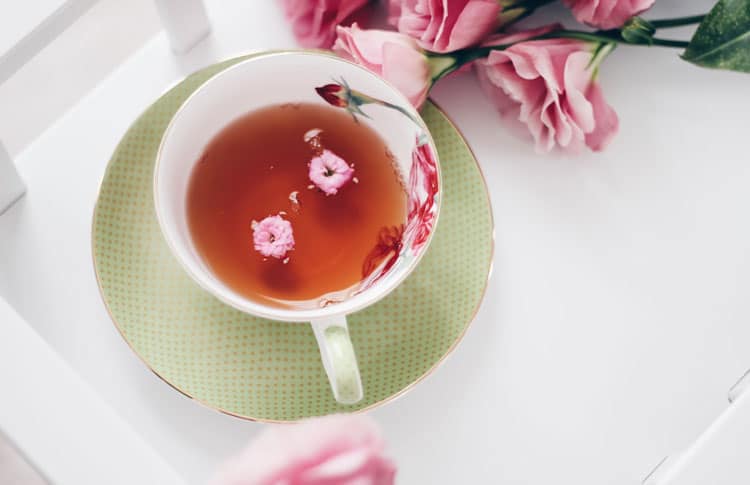
Fast-forwarding to today, afternoon tea is not generally a thing enjoyed in British homes as a matter of course. There are, however, tea shops in every town and the big city hotels will also offer it to their customers.
The traditional time for afternoon tea is between 3:00 and 4:30. As stated above, it was originally a light snack rather than an actual meal, and that’s how it remains today. Except, perhaps, for the prefix ‘light’.
When one has partaken of afternoon tea, the idea of having dinner a couple of hours later is one that, quite frankly, isn’t too appealing. Afternoon tea begins with dainty little sandwiches, generally with the crust cut off the bread. They come filled with such things as salmon and cucumber, cheese and pickle or egg mayonnaise and cress.
Following the sandwiches are scones with cream and jam and an assortment of little cakes and pastries. It is imperative that these are indeed little, as big wedges will detract from the classiness of the occasion.
Typical treats to serve include Victoria Sponge, mini eclairs and Battenburg. Although the options here are endless and certain establishments will have their own specialties.
Of course, it just wouldn’t be the same without a pot of tea or coffee. I mean, can you imagine an English mealtime without a pot of tea to hand?
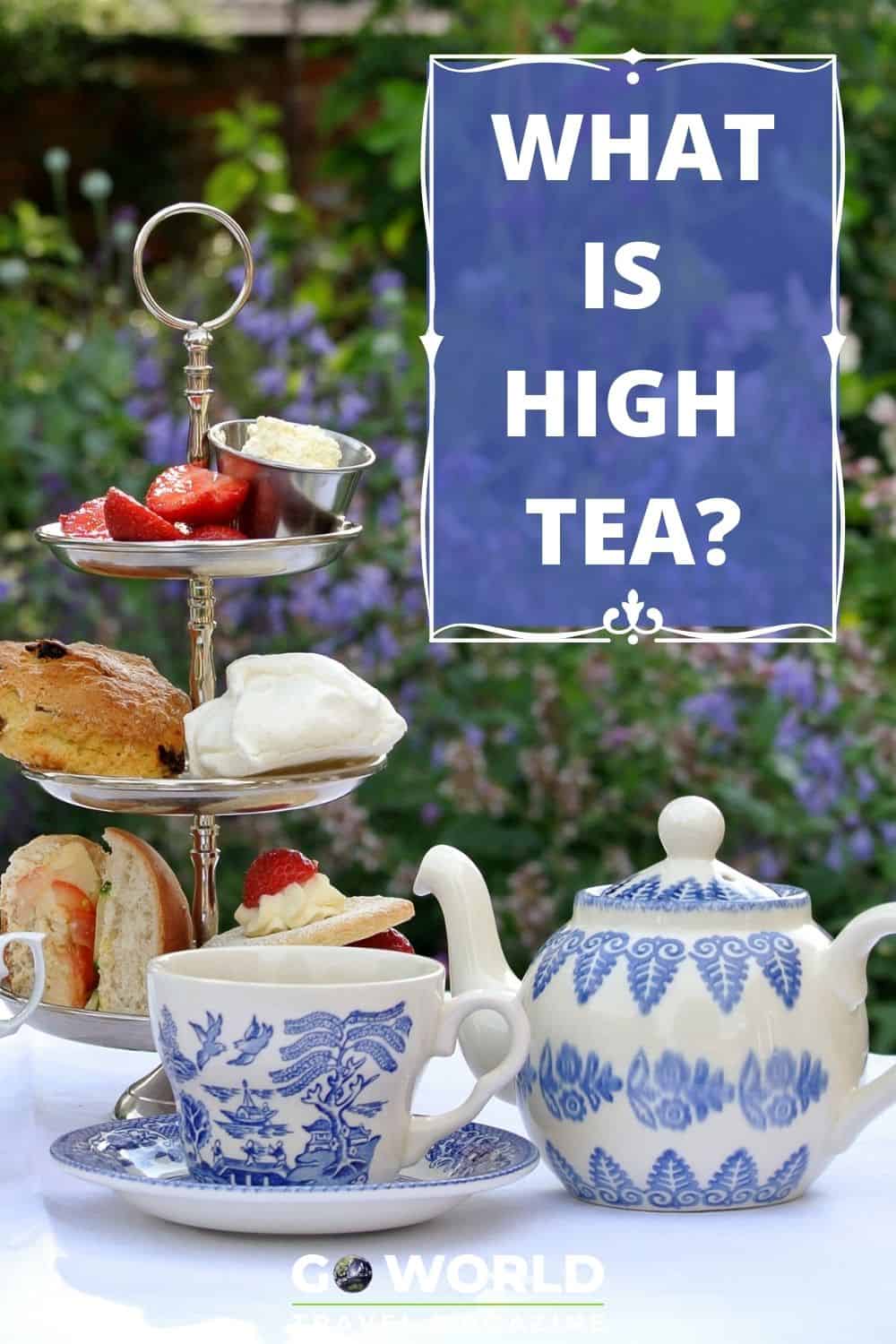
What is High Tea?
Just as afternoon tea came about for the upper classes, high tea is the working-class version. Born in the 1820s, high tea came about in the northern industrial areas of Britain.
After a hard and exhausting day at the factory, a worker would arrive home at around 6:00 in the evening, quite understandably in need of a good meal. But what is high tea? Traditional fayre of the time would be bread, cheese and vegetables with a big mug of tea.
But why call it ‘high tea’? This was because it would be taken seated at a table. Whereas afternoon tea, also given the nickname ‘low tea’, would be enjoyed whilst in a parlour with the repast having been placed on a coffee table, no bigger than knee height.
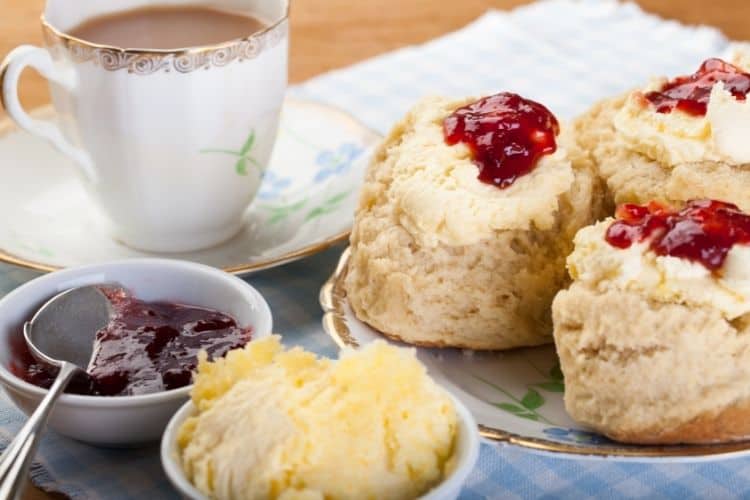
What is Cream Tea?
Not tea with cream instead of milk. A cream tea refers to a plate of scones, clotted cream and jam. Plus, of course, a pot of tea. Simple, eh? Oh come on, don’t be silly, you don’t think we’ll let you get away with it that easily, do you?
Let’s say you are visiting Cornwall. A cream tea is a scone cut in half; the jam is spread upon it with a big dollop of cream on top. Yum yum! Let’s say you are visiting Devon. A cream tea is a scone cut in half, the cream spread upon it with a big dollop of jam on top. Yum yum!
Did you spot the difference? The ‘cream or jam first’ debate is one that is fought almost as enthusiastically as the ‘which brand of tea is best’ controversy. The Cornish reasoning for jam first is that the warm scone would melt the cream and thus spoil your treat.
The Devonian reasoning for cream first is that you wouldn’t put butter on top of the jam on a slice of toast. Both sound, logical arguments.
I know what you’re thinking at this point … “Does it really matter?” Well, you can certainly get that sort of thinking out of your head you wicked child. Does it matter? Does it matter?
I tell you that it matters more to the residents of Devon and Cornwall than other age-old debates like what came first, the chicken or the egg. Or why is Goofy Mickey Mouse’s friend and Pluto Mickey Mouse’s pet when they’re both dogs?
So, there you have it – the English obsession with tea, both liquid and solid. But just why has it become such an obsession? Well, what else would we have to talk about? What about the weather? Oh, don’t get me started…
Author Bio: Nick Brown is a writer from England who loves a cream tea (but isn’t saying if he prefers jam or cream on top!). He also loves travel, see his article Why You Must Visit the Arizona Petrified Forest National Park

